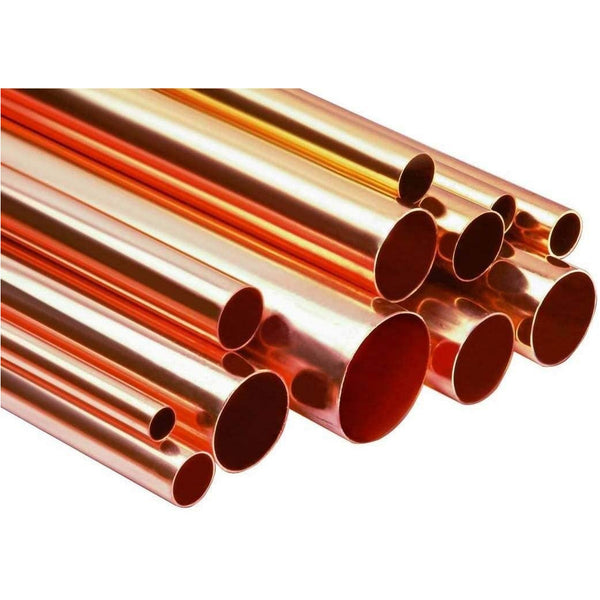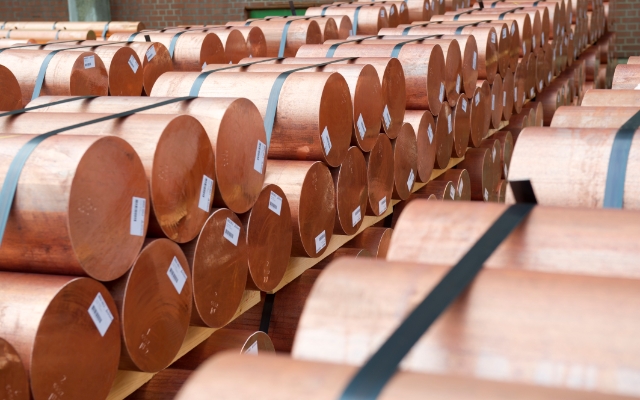Exactly How Copper Products Contribute to Lasting Practices in Various Industries
Copper items are increasingly identified for their considerable payments to lasting techniques throughout numerous fields, driven by their intrinsic properties such as performance, recyclability, and resilience. In eco-friendly power systems, for example, copper enhances the capability of solar and wind modern technologies, while its application in construction lessens waste through durability. Furthermore, the material's antimicrobial attributes provide encouraging advantages in health care setups. As industries look for to take on more lasting techniques, the duty of copper can prove crucial in attaining ecological objectives. What ramifications might this have for future technologies in sustainability?
Copper in Renewable Resource
Copper plays an essential duty in the advancement of renewable energy modern technologies, acting as an important conductor in numerous applications. Its phenomenal electrical conductivity and resistance to rust make it a perfect product for electric circuitry, which is vital in photovoltaic panels, wind turbines, and power storage space systems. In solar photovoltaic or pv systems, copper is used in the affiliations and wiring, enabling efficient energy conversion from sunshine to power.
In wind power, copper is indispensable to the generators and transformers that convert kinetic energy right into electrical power, making certain optimum performance and dependability. The need for electrical vehicles (EVs) is boosting, with copper being a key component in batteries, motors, and charging infrastructure. The shift to EVs dramatically boosts the demand for copper, as these lorries typically utilize 4 times extra copper than conventional inner combustion engine automobiles.
As the globe looks for to reduce environment change and transition to lasting energy resources, copper's duty becomes progressively crucial. The material not just enhances the efficiency and toughness of eco-friendly power systems but additionally supports the more comprehensive objective of minimizing greenhouse gas discharges and promoting a sustainable future.
Eco-Friendly Building Materials
In recent years, there has been a remarkable shift in the direction of the adoption of green building and construction materials in feedback to expanding ecological problems. This modification is inspired by the requirement for sustainable alternatives that reduce environmental footprints while maintaining structural honesty and aesthetic charm.
Copper, known for its durability and recyclability, has become a principal in this field. It can be used in roof, pipes, and electric systems, adding to energy effectiveness and reducing waste. Copper's long life means fewer replacements with time, further boosting its sustainability account.
Furthermore, products such as bamboo, redeemed wood, and reused steel are acquiring popularity. These options not just offer reduced ecological effect but additionally promote source preservation. As developing codes increasingly emphasize sustainability, designers and home builders are integrating these products into their tasks, promoting innovation in style.
The boosting adoption of environment-friendly construction materials mirrors a more comprehensive commitment to sustainability in the built atmosphere. By focusing on these materials, the construction market can substantially reduce its carbon impact, align with regulative requirements, and sustain a healthier community for future generations. This trend notes an essential step towards a much more sustainable future in building.
Copper's Role in Healthcare
Current studies have highlighted the considerable role of copper in health care setups, especially due to its antimicrobial homes. Copper surfaces have actually been revealed to reduce the existence of virus, consisting of viruses and bacteria, by up to 99.9% within a short duration. This amazing effectiveness makes copper a very useful product for high-touch surfaces in healthcare facilities, such as doorknobs, bed rails, and IV posts, thereby adding to enhanced infection control procedures.
Along with its straight antimicrobial results, copper also contributes in the more comprehensive context of hospital sustainability (Copper Products). By incorporating copper into medical equipment and home furnishings, healthcare centers can minimize the incidence of healthcare-associated infections (HAIs), which not just improves person outcomes however also lowers the prices connected with extended hospital keeps and additional therapies
Furthermore, copper's toughness and recyclability straighten with sustainable practices, permitting responsible resource administration. As health care systems significantly prioritize both client safety and environmental stewardship, the integration of copper items is becoming much more widespread. This twin benefit highlights copper's essential payment to a healthier, much safer, and much more lasting medical care environment.
Sustainability in Transport

Additionally, article source copper's durability and deterioration resistance add to the longevity of transport facilities (Copper Products). In rail systems, check here as an example, copper elements boost the integrity and effectiveness of signaling and power systems, necessary for minimizing hold-ups and power usage. In addition, copper's function in renewable resource systems, such as solar and wind, sustains sustainable transport services by providing clean energy for electrical transit alternatives
Investments in copper innovation not just foster sustainability yet also promote economic growth and work development in green sectors. As sectors make every effort to meet stringent environmental guidelines, the application of copper products in transportation becomes a pivotal strategy in achieving sustainability objectives and promoting a cleaner, much more reliable future.
Copper and Round Economic Situation
As the world progressively embraces sustainability, the function of copper in the round economic situation becomes ever extra significant. Copper's intrinsic homes-- such as its conductivity, sturdiness, and recyclability-- setting it as a crucial material in a resource-efficient economic climate. The circular economic situation aims to decrease waste and take full advantage of source use with recycling and reusing products, and copper excels in this respect.
The steel can be reused indefinitely without loss of quality, making it a perfect prospect for sustainable methods throughout different markets, including construction, electronic devices, and sustainable energy. By recovering and recycling copper from end-of-life products, sectors can substantially reduce the requirement for virgin materials, therefore decreasing environmental effects related to mining and handling.
Moreover, the assimilation of copper into circular economic climate structures not just preserves sources but likewise promotes technology. Services that focus on copper recycling add to a much more sustainable supply chain, boosting their competition while lining up with regulative needs and consumer preferences for environmentally liable items.
Conclusion
In final thought, copper items substantially add to lasting practices go throughout numerous sectors. Their necessary role in boosting sustainable power modern technologies, advertising environment-friendly building materials, sustaining infection control in health care, promoting sustainable transport, and personifying the principles of a round economic situation emphasizes the convenience and importance of copper. By incorporating copper into numerous applications, markets can attain better performance, lower environmental effect, and straighten with international sustainability objectives, inevitably fostering a more lasting future.

Copper's excellent conductivity makes it a favored material in electric automobile (EV) systems, improving energy performance and efficiency. In addition, copper's role in renewable energy systems, such as solar and wind, supports sustainable transportation solutions by providing clean power for electrical transportation alternatives.
Their vital function in improving eco-friendly energy modern technologies, promoting green building and construction products, supporting infection control in medical care, promoting lasting transportation, and embodying the concepts of a round economic situation underscores the flexibility and relevance of copper.
Comments on “Checking out the Flexibility and Durability of Cutting-edge Copper Products in Modern Style”